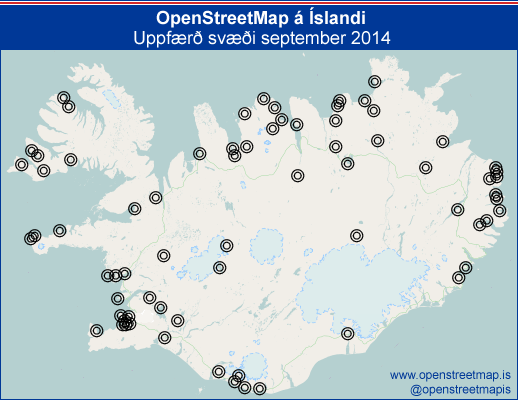Vital signs of maps - monthly maps of mapping progress in Iceland
Posted by Stalfur on 1 October 2014 in English.I’ve now made two maps for Mapping Botswana to show people that even if a map looks inert when you look at it, behind the scenes a lot is happening, just not maybe in the area you are looking at now.
So I’ve created one for Iceland as well.

This is not an exhaustive list but shows the major names that got updated: